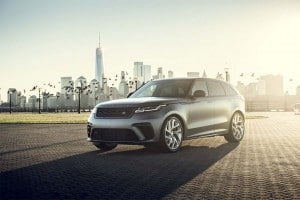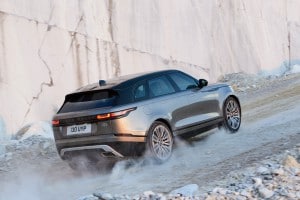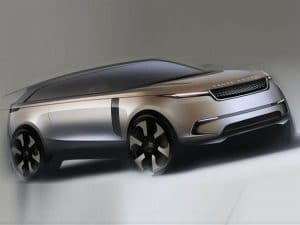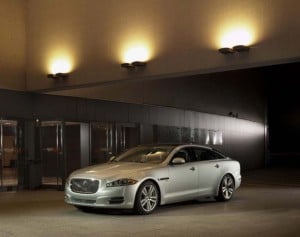
The next-generation Range Rover, due out in 2021, will be the first Land Rover model to adopt the MLA architecture capable of a broad range of conventional and electric powertrain options.
There’s been plenty of speculation in recent months about the direction Jaguar Land Rover will take as it adapts to pressure to electrify its line-up. The Jaguar side already has the all-electric I-Pace and has confirmed plans to go battery-electric with the next-generation XJ sedan, as well, using an all-new architecture called the MLA.
But what about Land Rover? Much recent reporting has focused on speculation that there would be a unique, all-new – and all-electric – model widely referred to as the “Road Rover.” Designed primarily for on-road use, it would slot in-between the current Land Rover Evoque and Velar models.
While there may yet be a Road Rover coming, much of what’s been published appears to miss a critical point. The MLA, or Modular Longitudinal Architecture, will have far more flexibility than most of the platforms being developed across the industry. And it will allow Land Rover to offer a broad mix of powertrain options – whether gas, diesel, hybrid or all-electric – on pretty much any vehicle the brand brings to market.
(Jaguar Land Rover Will Invest $1.3B to Set Up Battery-Car Plant in UK)
In other words, TheDetroitBureau.com reports, while there may yet be a unique model, a Road Rover, running solely on battery power, that option will be available for most everything in the company’s portfolio, at least if those future products are based on the MLA platform.

There has been some speculation Land Rover could come up with an all-electric “Road Rover” sized between the new Evoque and the Velar, shown here.
This is not, in itself, a unique strategy. BMW was one of the first manufacturers to focus on developing specific platforms for electrified models like the i3 all-electric city car and i8 plug-in hybrid sports car. But the automaker has shifted course and, as we previously reported, its approach now centers around using platforms that have the flexibility to handle pretty much any possible drivetrain technology.
Critically, it doesn’t mean BMW will abandon the idea of using a skateboard-like layout placing batteries, motors and other components below the load floor – going back to stuffing batteries in the trunk and under seats. Its new architecture will still permit that layout as it offers numerous advantages, including a lower center of gravity, more space for longer-range batteries and less intrusion in passenger and cargo space. But, the BMW approach still provides space under the hood for an internal combustion engine, whether gas or diesel, permitting any number of different powertrain combinations.
(BMW, JLR team up on development of next-gen battery technology.)
JLR has offered only limited information about the new MLA architecture, but we have learned that it follows pretty much the same strategy as BMW is adopting.
 It’s not as if JLR has been hiding that. “Designed and engineered in-house, MLA enables flexible production of clean efficient diesel and petrol vehicles alongside full electric and hybrid models,” it hinted in a news release from this past July.
It’s not as if JLR has been hiding that. “Designed and engineered in-house, MLA enables flexible production of clean efficient diesel and petrol vehicles alongside full electric and hybrid models,” it hinted in a news release from this past July.
“This flexible architecture will streamline engineering and manufacturing processes and increase commonality of components across our model range, with the aim of improving quality, reducing cost and increasing operational efficiency. The manufacturing flexibility offered by MLA and Ingenium gives us the speed and responsiveness to produce what our customers want at the right time,” it noted in a separate statement, Ingenium referring to its latest generation of internal combustion engines.
In other words, we may see a different mix of powertrain options on different product lines. Some could go solely with internal combustion, others purely electric, and there may be products that offer every possible powertrain option in the LR portfolio.
One thing we’ve been advised is that the Land Rover side of the company will take a different approach from Jaguar when it comes to styling.
“There are two basic approaches,” Land Rover design chief Jerry McGovern said in an interview this week with Britain’s AutoExpress. “There’s one that says if it’s an all-electric vehicle, it gives you the ability to free up your proportions. So you could have a more cab-forward approach. And then the question is, is that right for Land Rover?

The MLA architecture will be shared with the Jaguar side, showing up first in a new, all-electric version of the XJ sedan.
(Jaguar has some big plans — and some little one, too – for future SUVs.)
“Or do you just forget about what the proportion system is, and design the car round its relevance to the consumer and optimizing it in terms of what it’s capable of doing in terms of its on-road/off-road abilities, in terms of its functionality, its storage, its versatility and all those things?”
The Land Rover side, it seems will see its electrified products maintain the more classically SUV styling of today’s models and not opt for the more futuristic look of the Jaguar I-Pace – and what is expected to follow with the all-electric XJ.
As for the timing of the roll-out of the MLA architecture, during a recent call with analysts, JLR officials said the first new products will be a “large SUV and a large premium sedan.” That large SUV is expected to be the next-generation Range Rover, due in 2021, along with the Jaguar XJ scheduled to debut next year.
If there ever is to be a unique, electric-only Road Rover, it likely won’t show up until close to mid-decade.
